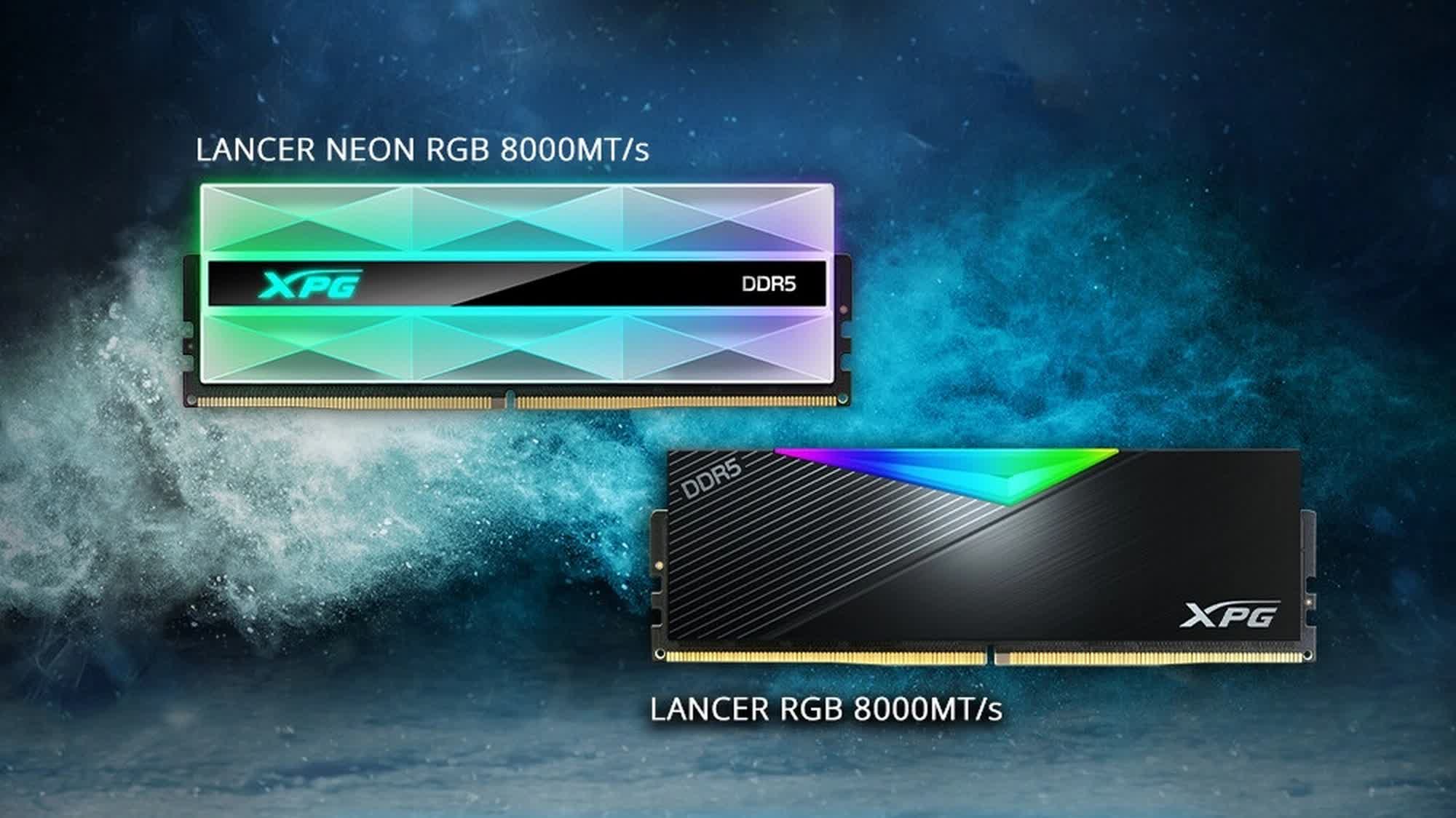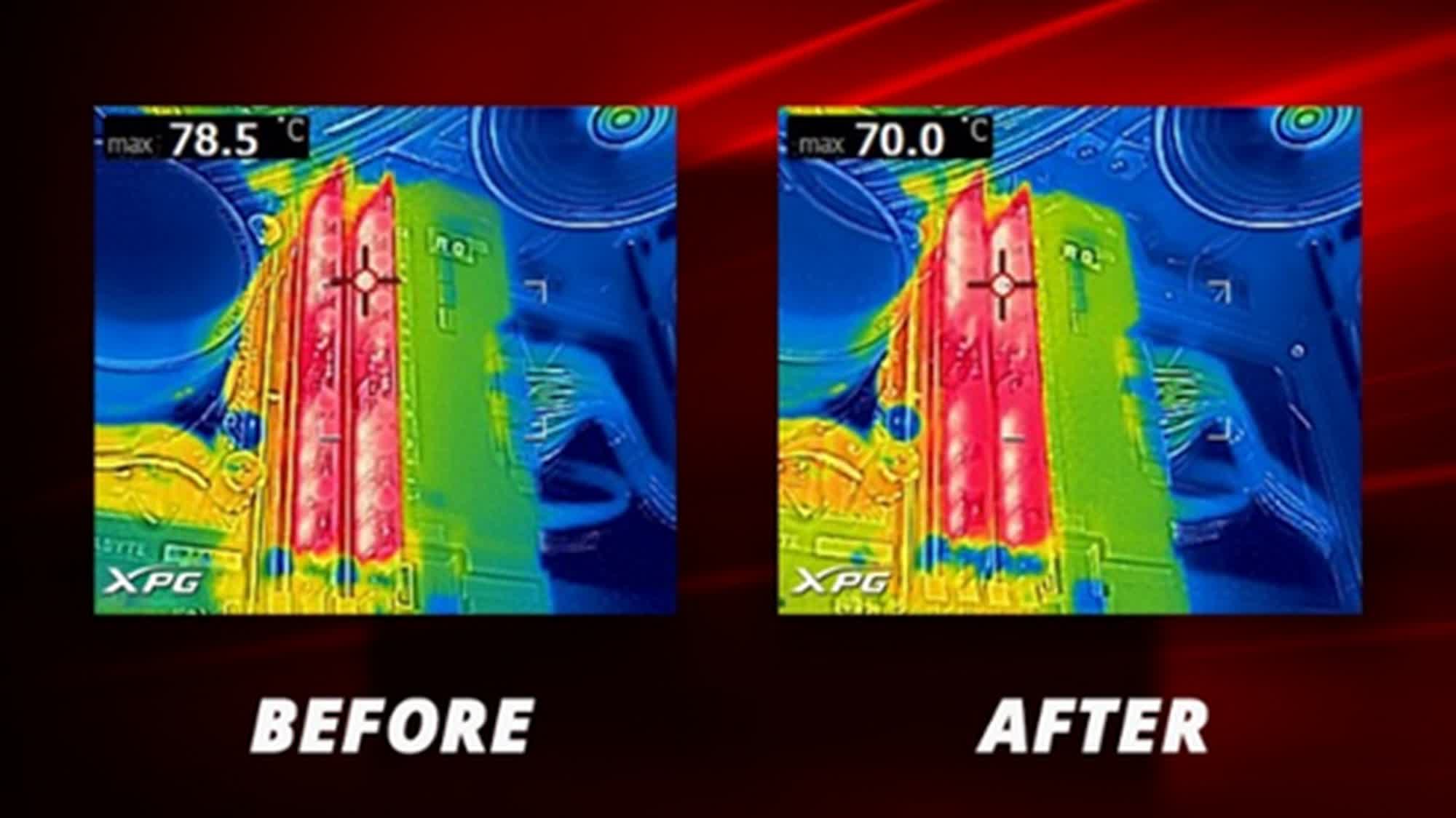What just happened? Adata has announced that it has developed a new thermal coating technology that can significantly reduce the running temperatures of its memory modules. The company says that it plans to use the new coating on the PCB of its XPG-branded high-performance DDR5 RAM kits from the second quarter of this year.

The new coating is reportedly capable of reducing temperatures by more than 10 percent, and the company claims that real-world tests have demonstrated an 8.5°C temperature reduction in overclocked DDR5 memory when compared to standard cooling solutions. According to Adata's press release, the new coating will allow gamers and extreme overclocking enthusiasts to better tune their machines for high performance without worrying about the thermals.
To demonstrate the cooling prowess of the new technology, Adata used a thermal camera to record the running temperatures of its Lancer Neon 8000MT/s DDR5 kits with and without the coating. The modules without the coating (on the left) can be seen running at 78.5 degrees Celsius, while the two modules with the coating (on the right) are recorded at 70 degrees Celsius.

It is worth noting that, for now at least, the new thermal coating technology will be limited to overclocked DDR5 gaming memory running at 8000MT/s or more. The first sets of products to get the new feature will be the Lancer Neon RGB and Lancer RGB series that are expected to be unveiled at Computex 2024 in Taiwan in June before being launched in the second half of this year.
Heat is a sworn enemy of computer hardware, and the high temperatures generated by super-fast or overclocked memory modules can adversely affect system stability, performance, and reliability. While people generally invest heavily in CPU and GPU cooling solutions, memory modules also require effective cooling, especially for users who overclock their RAM. In most cases, however, the standard built-in heatspreaders get the job done without the need for any fancy cooling solutions.
Adata's new technology is clearly aimed at a niche group of extreme overclockers, but it remains to be seen if its claims about substantially lower temperatures will hold up in independent tests. It will also be interesting to see if the coating will prove to be as durable as regular heatspreaders, or if they will wear out quickly and adversely affect the lifespan of the memory modules.